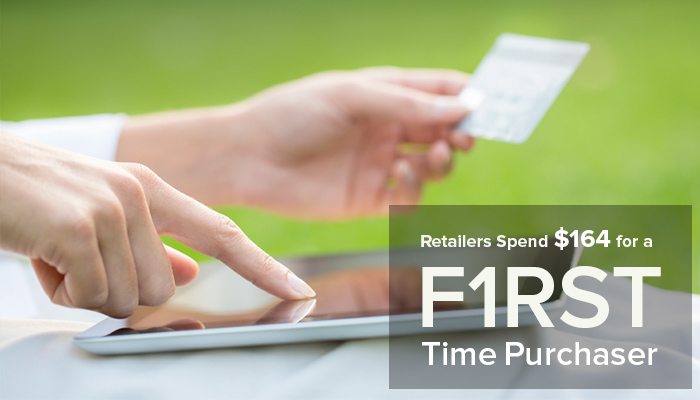
Retailers Spend $164 To Acquire Mobile Shoppers
What is the value of a first time purchaser in the world of eCommerce? The answer may not be as simple as you think.
According to research by the eCommerce reward platform Sweet Tooth, after making their first purchase, a consumer has a 27% likelihood of returning to make a second purchase. After their second purchase, that loyalty jumps to an astounding 45% likelihood they will make a third. Loyal customers are a retailer’s bread and butter, and smart marketers know that the money spent to bring in a first time purchaser is money well spent.
But how much exactly does it cost to acquire a mobile shopper? To better understand how retailers perform on mobile, Liftoff analyzed a set of data consisting of 11,284 first-time purchases by consumers acquired through paid app install campaigns. Of the data analyzed, approximately 70% of users were based in North America and 30% in Europe, Asia, the Middle East and South America. What we found was that on average, retailers spend $164 per person to acquire a first time purchaser.
Download the Q2 App Engagement Index to get the latest mobile CPAs and conversion rates.
So what exactly is contributing to this seemingly high customer acquisition cost?
The path from user acquisition to purchase can be a long one, and every step in the process increases the possibility that a user will drop out of the funnel and become a missed opportunity. In your average mobile purchase chain of events, it’s not uncommon for there to be upwards of ten steps between first viewing a retailer’s app ad and the actual transaction.
- View eCommerce app advertisement
- Click on eCommerce app advertisement
- Download app
- Open app
- Browse for the right product
- Place items in cart
- View cart
- Register / Create account (72.5% of downloaders)
- Fill out shipping and payment information
- Complete purchase (2.2% of downloaders)
At any point in the process, a consumer can easily get distracted by an incoming text message or push notifications, leave the app to do price comparison shopping, decide that shipping costs were too high, or simply stop for any number of reasons.
For users who already downloaded your app, getting them engagement the moment they open the app is vital. In a recent Liftoff data analysis on mobile conversion times, we found that 28% of all purchases are made in the first two hours of installing an app, and 50% of users who purchase will do so in the first 21 hours. A consumer who has not made a purchase in the first 16 days has only a 10% chance of ever making one. With this in mind, as a marketer it is important that you gently remind users of the existence of your app and the actions they have taken inside it, using push notifications and retargeted ads.
Advancements in mobile retargeting allow you to use some of the same successful tactics in mobile campaigns that you have been doing for the last few years on the desktop web. Ads can be created and targeted to existing users that showcase products that have been placed in a users cart, or highlighting sales in a particular subsection of your inventory that a consumer has been browsing. These ads can follow a user across social networks and other mobile apps on their phone, and deep links can take users directly from these ads right back to the shopping cart in your app, bypassing other distractions. Even if a user deleted your app, you can still reach them with retargeting ads. But instead of deep linking them inside the app, you can direct them to re-download your app in the App Store.
These mobile marketing best practices are not limited to retail shopping apps but can be applied successfully to most any type of app. Want to learn more? Email me at [email protected] to learn more about how Liftoff can help you build an engaged, revenue-producing mobile user base.